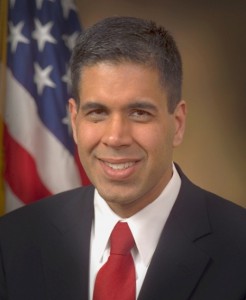It will come as no surprise to anyone reading this that we have a prescription drug problem in the United States. As I see it, however, we are not devoting our attention to the real root of the problem. Yes, we have prosecuted the drug-dealing doctors, pain clinics and pharmacies. Yes, we have taken on the middle-men (or women) between the doctors and the users. And yes, we have offered help to the addicts. But the real victims are their children, and they have gone overlooked.
I sentence pill peddlers every month. They tell me the same story in nearly every case: Good person gets hurt, gets prescribed pain killers, gets addicted, loses job, and starts dealing to sustain his habit. “A doctor prescribed it so it can’t be bad for you,” they thought. And more often than not, they have kids. Kids who lost their parents to drugs and will now lose them again to jail. With broken homes and terrible role models, they, too, are likely to turn to drugs.
Pills are the new drug of choice for kids. A recent survey revealed that young people 12 and older are abusing prescription drugs at greater rates than cocaine, heroin, hallucinogens, and methamphetamine combined.1 Only marijuana abuse is more common.2 And, most troubling, every day approximately 7,000 young people abuse a prescription narcotic for the first time.3
In turn, young adults are joining the ranks of prison inmates, state and federal. Recently, I sent two young women to the federal penitentiary—ages 22 and 23.
This is the new crack-cocaine epidemic, but worse. Not because it is both rural and urban—crack and other drugs have reached past the cities. Not because it is lethal—many drugs are lethal. It is worse because (1) doctors are the enablers (sometimes knowingly), (2) the supply seems to be endless, and (3) some of our youth falsely believe that prescription narcotics are a safe alternative to other illicit drugs.
And unlike other drugs which kids had to seek out, prescription drugs find them. In a recent survey, 55 percent of 12 to 17 year olds said they obtained prescription drugs from a relative or friend for free; 9 percent paid a friend or relative; and 5 percent took drugs from a friend or relative without asking.4 Less than 5 percent obtained the illicit drugs from a dealer, and approximately 18 percent obtained the prescription from a doctor.5
This problem is insidiously rampant, and law enforcement cannot handle it alone. Indeed, they can arguably only attack a small percentage of those providing our youth with drugs (the dealers and doctors). And while I think stiff sentences for those peddling drugs to our children can help, more action is needed to solve the problem.
Luckily, this is not a problem without a solution. First, every state should have a system like we have here in Kentucky that monitors every prescription. Budgets may be tight, but this is worth the cost. Second, we must educate our children. Studies have shown that talking to our children early and often deters them from using drugs. Third, we must educate adults about the problem: (1) they must act as role models; (2) be involved in their children’s lives, including paying attention to whom their children are spending time with; and (3) make sure they themselves are not the supplier by properly discarding old or unused prescriptions. Children with involved parents have a 50 percent lesser chance of trying and using drugs.6 Finally, we must educate doctors about the problem. While most doctors would not illegally prescribe pills, they should still be cognizant of the widespread abuse and exercise special care when prescribing these drugs. And, the few that ultimately choose to become dealers must be prosecuted and sentenced to very lengthy jail times.
1Substance Abuse & Mental Health Services Administration, U.S. Department of Health & Human Servs., Pub. No. 10-4586, Results from the 2009 National Survey on Drug Use and Health: Volume I (2010).
2ibid at 14.
3ibid at 53.
4ibid at 28.
5ibid
6ibid at 72.
Published
May 2011

